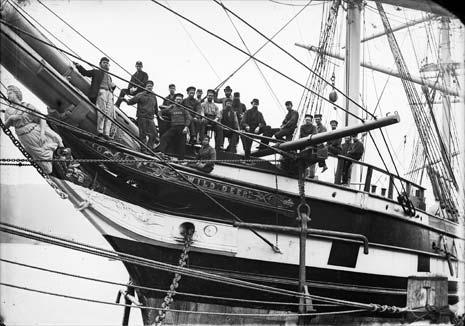Lots
of information about Ballyhalbert on the Ballyhalbert
Historical Society web site. |
|||||||
The little seaside village of Ballyhalbert stands a few miles north of Northern Ireland's second largest fishing port, Portavogie. The name Ballyhalbert is derived from Bally-talbot, Talbotstown, the Talbot's were an Anglo Norman family from Herefordshire in England, who came to Ireland as part of the Norman invasion which began in 1177, the Talbot's also settled in County's Carlow, Wicklow and Dublin, where a street still bears their name, in Wicklow the barony of Talbotstown is still in existence, the family held title to Malahide Castle for nearly eight hundred years. A Benedictine Priory once stood in
the vicinity of Ballyhalbert it was built in 1204 Today no trace of the monastery remains, in Basset's guide to County Down published in 1886 he wrote, "The Black Abbey stood at a distance of about a mile and a half from Greyabbey. It was founded by John De Courcy in about 1180. The last fragment of ruin was removed by a farmer some years ago". The coast around Ballyhalbert has many reefs and shoals which have claimed numerous ships and lives, one particularly notable casualty occurred on the night of 12th January 1883 when the three masted emigrant ship Wild Deer, carrying 209 passengers and forty crew, under the command of captain Kerr, on passage from Glasgow towards Otago, New Zealand, went ashore on the north rocks off Ballyhalbert. Fortunately no lives were lost on this occasion, all were successfully taken off the next morning by the coastguard and local fishing boats. Another casualty occurred in 1792 this was the Lord Bangor a small sailing vessel carrying coal towards Strangford, I suspect this vessel was owned by Lord Bangor of Castle Ward County Down, there was much activity off the Ballyhalbert coast during the first world war, on 2nd May 1917 several vessels were boarded and sunk by bombs in Ballyhalbert Bay, these were the Saint Mungo, Derrymore, Amber, and Morion, six miles south-east of the Skulmartin Lightship the earnest met with the same end. All this was the work of Otto Steinbrinck of the U65 who was one of the the most submarine successful commander of the era, all the crews of vessels were allowed to leave on the ships boats. In the early 1970's popular Northern Ireland comedian James Young 'Jimmy Young' bought a house in Ballyhalbert, he named the house "Camelot" after a play in which he was appearing. Jimmy died on 5th July 1974 and was buried from his house in Ballyhalbert.
|
|||||||
|
|
From
A Topographical Dictionary of Ireland |
||
|
(1837) by Samuel Lewis
Ballyhalbert, a parish, in the barony of ARDES, county of DOWN, and province of ULSTER, 3 miles (N. E.) from Kirkcubbin: the population is returned with the union of St. Andrew's. It comprises, according to the Ordnance survey (including islands), 4012 statute acres. The village, which in 1831 contained 322 inhabitants, is situated on the eastern coast, and on the road from Portaferry to Donaghadee: it contains about 70 houses, and is a coast-guard station, forming one of the twelve which constitute the district of Donaghadee. Off the coast is Burr Island, the most eastern point of land in Ireland. The parish is in the diocese of Down, and is one of the three of which the vicarages were consolidated by the 2nd of Queen Anne into the union of Ballywalter, or vicarage of St. Andrew's; the rectory is appropriate to the Lord-Primate. The tithes amount to £388. 2. 6., of which £258. 15. is payable to the appropriator, and £129. 7. 6. to the incumbent. On the next avoidance of the benefice of St. Andrew's, this parish will become a separate living, in the patronage of the Lord-Primate. There are some remains of the old church near the village. In the R. C. divisions it forms part of the union or district of Lower Ardes or Ballygelget. There is a place of worship for Presbyterians in connection with the Synod of Ulster; also a school. |
||
More
from Samuel Lewis. |
|


 and known as the "The Priory of St. Andrews of the Ards" but
later became known as Blackabbey, because of the colour of the Monks clothes.
The abbey like many others Irish Abbeys fell victim to Henry VIII dissolution
of the monasteries some time around 1536.
and known as the "The Priory of St. Andrews of the Ards" but
later became known as Blackabbey, because of the colour of the Monks clothes.
The abbey like many others Irish Abbeys fell victim to Henry VIII dissolution
of the monasteries some time around 1536.